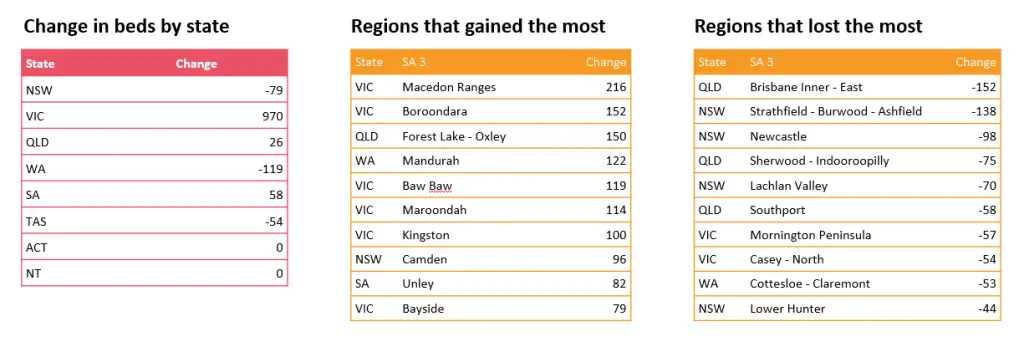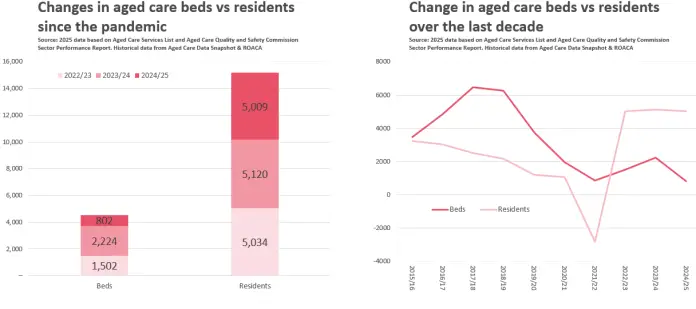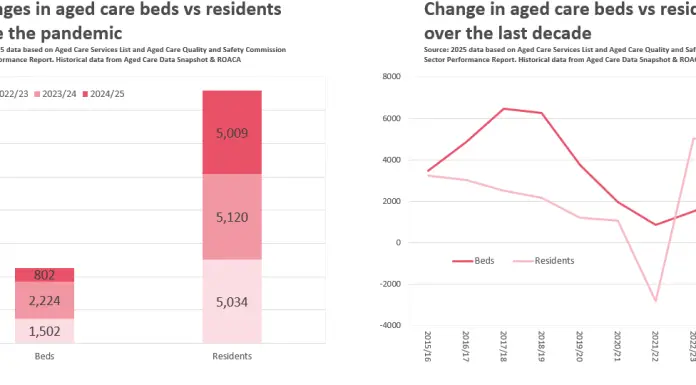Australia’s residential aged care bed growth is failing to keep pace with surging demand, with new analysis showing the number of residents is rising by about 5,000 each year, while total bed numbers increased by only 800 in 2024–25.
The analysis by not-for-profit aged care provider Bolton Clarke, based on the newly released 2025 Aged Care Service List, reveals a 60 per cent drop in new bed growth compared with the previous year — widening the gap between available places and growing need.
The findings come as hospitals across the country continue to face long waitlists for older people awaiting discharge into residential care.
Bolton Clarke Executive General Manager, Policy and External Relations, Tim Hicks, said that strong pre-pandemic growth in aged care supply had slowed dramatically as demand accelerated.
“This acceleration in demand is likely to continue, with the baby boomers beginning to hit their 80s over the next decade,” Mr Hicks said.
He noted that while government figures list around 21,000 vacant beds nationally, many are not genuine vacancies due to renovations or the conversion of shared rooms to singles in line with changing resident preferences.

Bed supply also remains uneven across states. Victoria recorded the largest net gain of 970 new beds in 2024–25, while Western Australia saw the steepest decline, losing 119. New South Wales and Tasmania also reported net losses of 79 and 54 beds, respectively. Regionally, Brisbane’s inner east (152 beds) and Sydney’s Strathfield-Burwood-Ashfield area (138) were among the hardest hit.
Mr Hicks said that funding reforms under the new Aged Care Act could improve the viability of new developments in higher-income areas, but warned that policy changes were needed to support equitable access nationwide.
“Policy needs to fix the supplement for supported residents and factor in a reasonable margin for care and hotel services, or the business case for building residential care over retirement living will continue to fall short.”
He suggested reallocating funding already budgeted in forward estimates could help address immediate shortfalls.
“Demand is growing but more realistically between 5,500 and 7,000 additional residents per year seems likely,” Mr Hicks said. “If current projections overstate future demand, those funds could be redirected to accelerate the construction of new beds and ease the undersupply already affecting older Australians,” he added.











